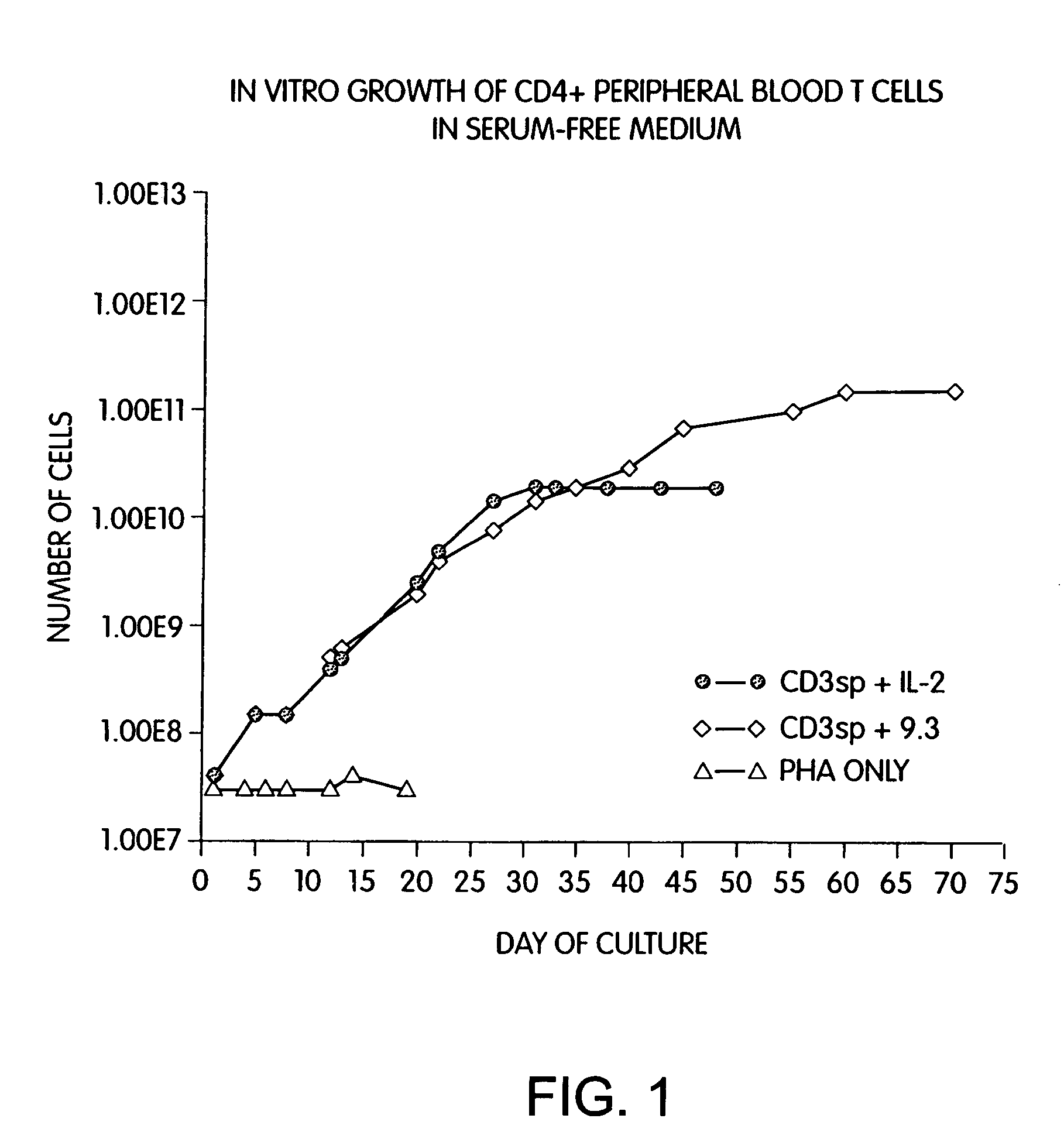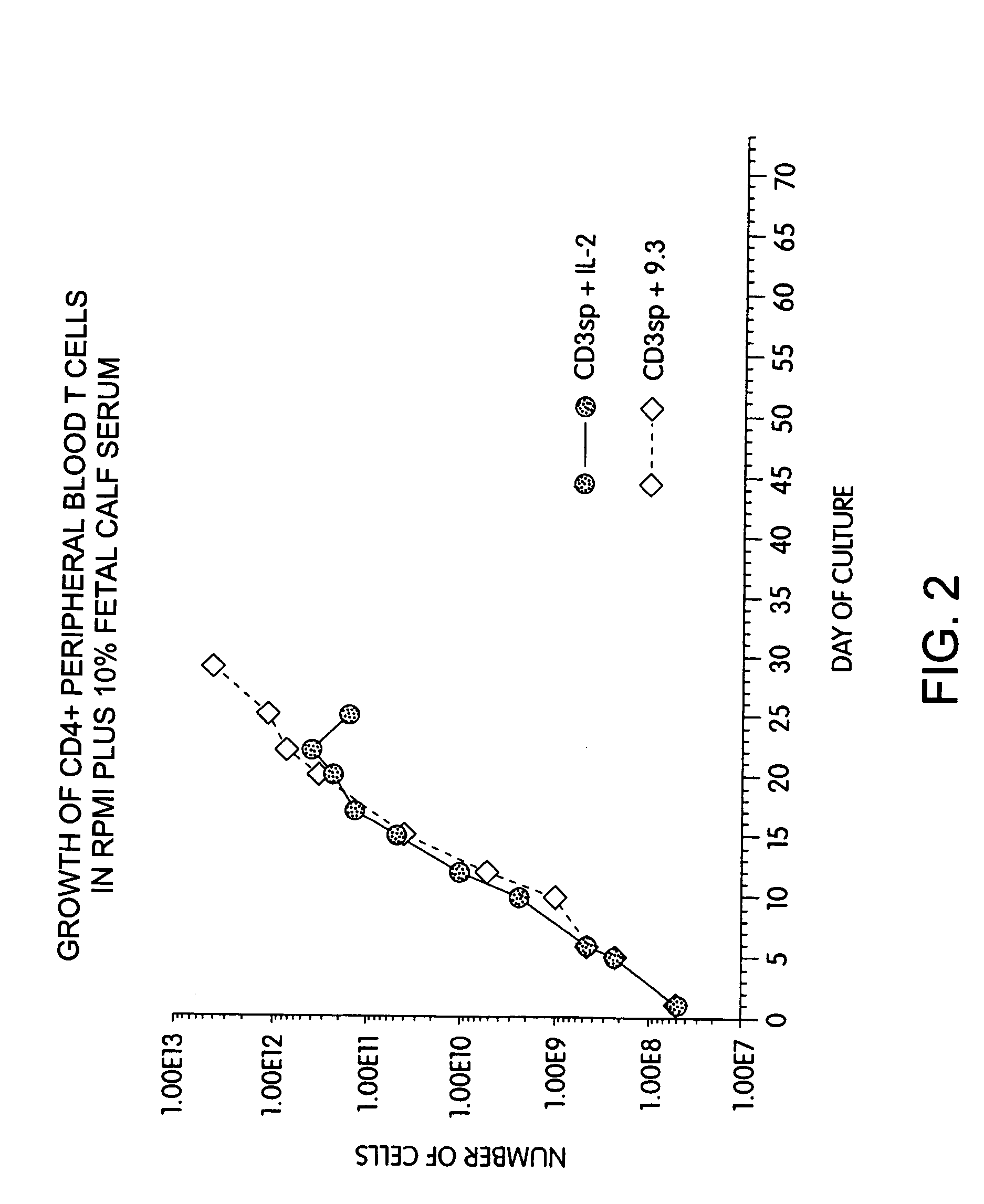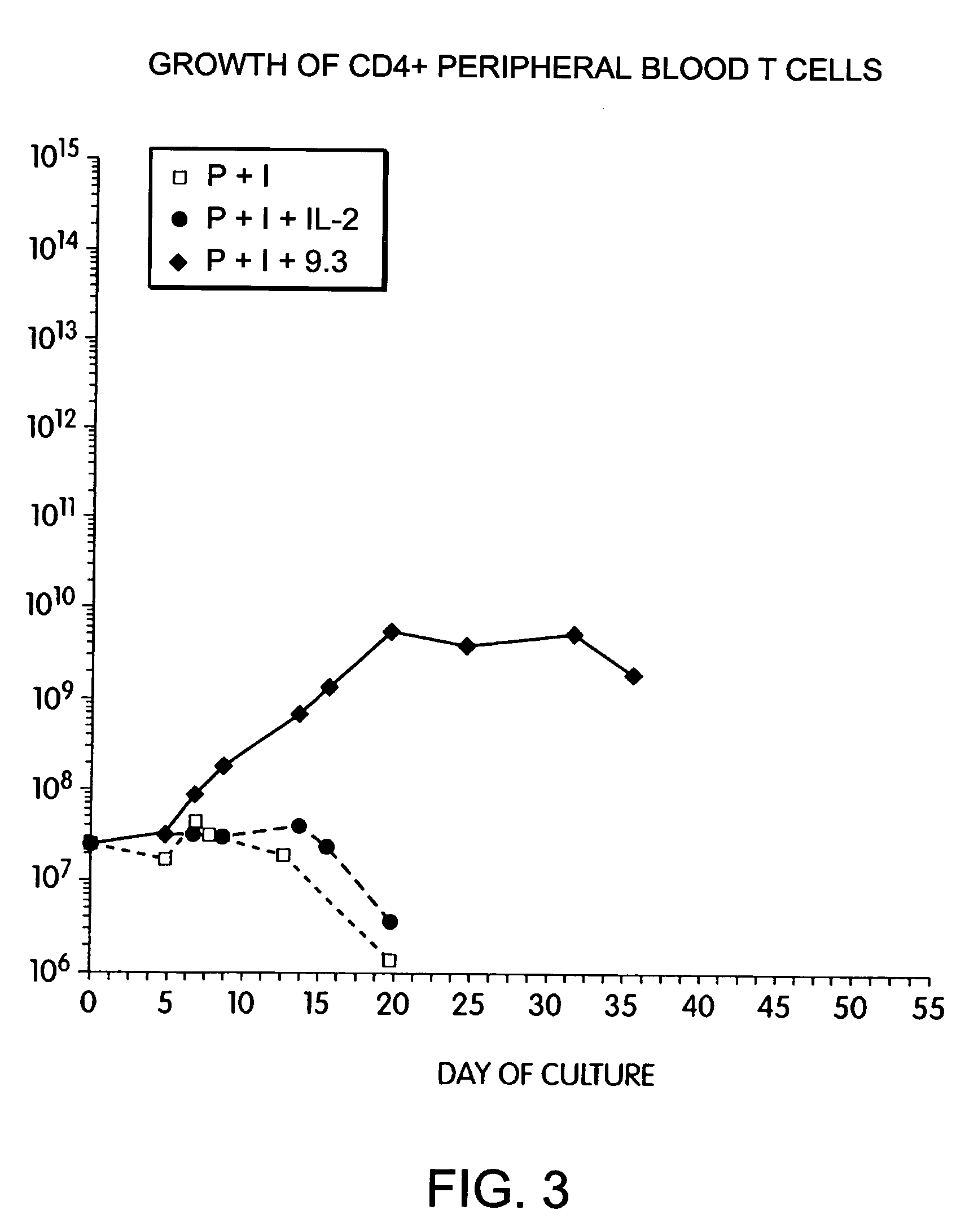Methods for selectively stimulating proliferation of T cells
a technology selective stimulation, which is applied in the field of selective stimulation of t cell proliferation, can solve the problems of contamination of the entire t cell population during long-term culture, the inability to supply a renewable supply of accessory cells, and the significant problem of long-term culture systems
- Summary
- Abstract
- Description
- Claims
- Application Information
AI Technical Summary
Benefits of technology
Problems solved by technology
Method used
Image
Examples
example 1
Long Term Growth of CD4+ T Cells with Anti-CD3 and Anti-CD28 Antibodies
[0159]Previous known methods to culture T cells in vitro require the addition of exogenous feeder cells or cellular growth factors (such as interleukin 2 or 4) and a source of antigen or mitogenic plant lectin. Peripheral blood CD28+ T cells were isolated by negative selection using magnetic immunobeads and monoclonal antibodies as described in the Methods and Materials section above. CD4+ cells were further isolated from the T cell population by treating the cells with anti-CD8 monoclonal antibody and removing the CD8+ cells with magnetic immunobeads. Briefly, T cells were obtained from leukopheresis of a normal donor, and purified with FICOLL™ density gradient centrifugation, followed by magnetic immunobead sorting. The resulting CD28+, CD4+ T cells were cultured in defined medium (X-Vivo10 containing gentamicin and L-glutamine (Whittaker Bioproducts) at an initial density of 2.0×106 / ml by adding cells to cultu...
example 2
Long Term Growth of Anti-CD28-Treated T Cells in Medium Containing Fetal Calf Serum
[0161]Another series of experiments tested whether the growth advantage of CD28 receptor stimulation was due to replacement of factors normally present in fetal calf serum. T cells were obtained from leukopheresis of a normal donor, and purified with FICOLL™ density gradient centrifugations, followed by magnetic immunobead sorting. The resulting CD28+, CD4+ T cells were cultured at an initial density of 2.0×106 / ml in medium (RPMI-1640 containing 10% heat-inactivated fetal calf serum [Hyclone, Logan, Utah] and gentamicin and L-glutamine) by adding cells to culture dishes containing plastic-adsorbed OKT3. After 48 hours, the cells were removed and placed in flasks containing either hIL-2 (10% final concentration, CalBiochem) or anti-CD28 mAb 9.3 (800 ng / ml). The cells were fed with fresh medium as required to maintain a cell density of 0.5×106 / ml, and restimulated at approximately weekly intervals by cu...
example 3
Long Term Growth of T Cells in Phorbol Ester, Ionomycin and Anti-CD28-Stimulated T Cells
[0163]Further experiments tested whether alternative methods of activating T cells would also permit CD28 stimulated growth. Pharmacologic activation of T cells with PMA and ionomycin is thought to mimic antigen receptor triggering of T cells via the TCR / CD3 complex. T cells were obtained from leukopheresis of a normal donor, and purified with sequential FICOLL™ and PERCOLL™ density gradient centrifugations, followed by magnetic immunobead sorting. The resulting CD28+, CD4+ T cells were cultured at an initial density of 2.0×106 / ml by adding cells to culture dishes containing phorbol myristic acid (PMA 3 ng / ml, Sigma) and ionomycin (120 ng / ml, Calbiochem, lot #3710232). After 24 hours, the cells were diluted to 0.5×106 / ml and placed in flasks containing either rIL-2 (50 IU / ml, Boerhinger Mannheim, lot #11844900)) or anti-CD28 mAb (1 μg / ml). The cells were fed with fresh medium as required to maint...
PUM
| Property | Measurement | Unit |
|---|---|---|
| density | aaaaa | aaaaa |
| pH | aaaaa | aaaaa |
| temperature | aaaaa | aaaaa |
Abstract
Description
Claims
Application Information
 Login to View More
Login to View More - R&D
- Intellectual Property
- Life Sciences
- Materials
- Tech Scout
- Unparalleled Data Quality
- Higher Quality Content
- 60% Fewer Hallucinations
Browse by: Latest US Patents, China's latest patents, Technical Efficacy Thesaurus, Application Domain, Technology Topic, Popular Technical Reports.
© 2025 PatSnap. All rights reserved.Legal|Privacy policy|Modern Slavery Act Transparency Statement|Sitemap|About US| Contact US: help@patsnap.com



